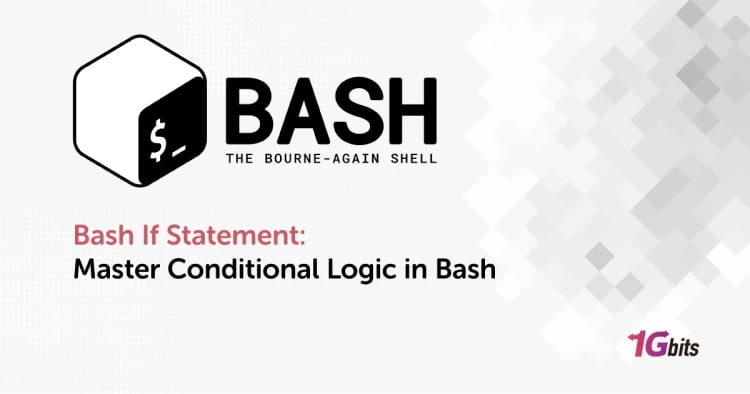If you've ever encountered sluggish or unresponsive programs, you've probably wondered why. The explanation might be connected to the performance of your storage devices, which is measured by an IOPS statistic. Input/output operations per second (IOPS) is an important statistic used to assess the performance of storage devices such as SSDs, hard disk drives (HDDs), and other storage technologies.
This blog article will go through what IOPS is, why it is significant, how it is measured, and the factors that influence IOPS. We will also look at recommended practices for maximizing IOPS and show instances of IOPS in action across various sectors and applications. You will better grasp IOPS and how it affects the performance of your computing system at the conclusion of this blog article.
What are IOPS
IOPS is an abbreviation for Input/Output Operations Per Second. It is a metric used to assess the performance of a storage device, such as a hard disk drive (HDD) or a solid-state drive (SSD) (SSD). IOPS is the number of input/output operations a storage device can do in one second.
In other words, IOPS quantifies how many read or write operations a storage device can perform per second. Greater IOPS often implies quicker performance since the storage device can process more requests in the same time.
IOPS is an essential indicator for measuring storage system performance since it directly influences the speed and responsiveness of storage-dependent applications and workloads. It is frequently used in benchmarking and performance testing to evaluate various storage devices and setups.
IOPS can be affected by the kind of storage device (HDD vs. SSD), the interface used to connect the device (such as SATA or PCIe), the workload (random vs. sequential), and the storage system configuration. Users may make educated decisions regarding storage device selection and configuration by knowing IOPS and its influence factors.
How IOPS are measured
IOPS are often assessed using specialized benchmarking tools designed to mimic various sorts of workloads and analyze storage device performance. These tools send random or sequential read or write requests to the storage device and then count the number of I/O operations the device can do per second.
Several benchmarking tools are available for measuring IOPS, and their complexity, accuracy, and the sorts of workloads that they can mimic vary. Benchmarking tools that are widely used include:
- Iometer: A free, open-source tool for measuring IOPS for a wide range of workloads, including sequential and random read/write operations.
- FIO (Flexible I/O Tester): Another open-source program for simulating various workloads, including sequential and random access patterns.
- CrystalDiskMark: A popular benchmarking program for measuring storage device sequential and random read/write performance.
- ATTO Disk Benchmark: A tool built particularly to assess the performance of storage devices using various block and transfer sizes.
It is critical to select a benchmarking tool appropriate for the workload you are attempting to replicate while measuring IOPS. This can assist in guaranteeing that the benchmark results truly represent the storage device's real-world performance.
Why IOPS is important
IOPS are a significant statistic for measuring the performance of storage systems and devices because they directly influence the speed and responsiveness of storage-dependent applications and workloads. Greater IOPS often implies quicker performance since the storage device can handle more read/write requests in the same amount of time.
Many applications and workloads in modern computer systems rely heavily on storage performance. For example, databases, virtual machines, and high-performance computing applications can benefit from large IOPS. Slow storage systems can degrade application performance, cause longer load times, and reduce productivity.
IOPS might also be a crucial aspect when selecting and configuring storage devices for certain workloads. A high-transaction database application, for example, may require a storage device with very high IOPS to meet the high rate of read/write requests. Similarly, in order to manage big file sizes and sustain real-time playback, a video editing workstation may require a high-performance storage device with high IOPS.
Users may make educated decisions regarding storage device selection and configuration by knowing IOPS and its influence factors. This may assist in guaranteeing that apps and workloads function effectively and that users get the greatest performance possible from their computing environments.
Factors that affect IOPS
A storage device's IOPS can be affected by a number of things. These are some examples:
Storage device type: The storage device type can have a major influence on IOPS. Since they have no moving components and can access data more quickly, solid-state devices have greater IOPS than hard disk drives (HDDs).
Interface: IOPS can be affected by the interface used to connect the storage device to the system. A storage device linked over a faster interface, such as PCIe, would often have more IOPS than one connected through SATA.
Workload: Workload can have an impact on IOPS. Random workloads, which require non-sequential data access, often result in fewer IOPS than sequential workloads, which entail data access in a certain order.
Queue depth: IOPS can also be affected by the number of pending I/O requests in the storage device's queue. Because the storage device may handle several requests concurrently, a larger queue depth can result in higher IOPS.
Storage system configuration: The storage system's configuration can also affect IOPS. For example, RAID (redundant array of independent disks) can boost IOPS for certain workloads by allowing many storage devices to collaborate to perform I/O requests.
Configuration of the operating system and storage device drivers: The configuration of the operating system and storage device drivers can also impact IOPS. Caching or write-back modes, for example, might boost IOPS for certain workloads but may potentially raise the risk of data loss in the case of a system failure.
Users may make educated decisions regarding storage device selection and configuration by understanding these aspects and how they impact IOPS. This may assist in guaranteeing that apps and workloads function effectively and that users get the greatest performance possible from their computing environments.
Examples of IOPS in action
These are some real-world instances of IOPS:
Database applications: Database applications rely heavily on storage speed, requiring frequent read/write operations to retrieve and alter data. A high IOPS database, for example, may be required to support a large number of concurrent transactions in an online transaction processing (OLTP) database.
Virtual machines: Virtual machines (VMs) rely on storage performance to enable quick access to virtual disks. High IOPS can help VMs perform better, especially those running I/O-intensive workloads like databases or web servers.
Video editing: To handle big file sizes and sustain real-time playback, video editing workstations require high-performance storage systems with high IOPS. This can assist in guaranteeing that the video editing process is as smooth and efficient as possible, with no lag or stuttering.
Gaming: To deliver smooth and responsive gameplay, gaming systems demand high-performance storage devices with rapid IOPS. This is especially significant in games with big worlds and frequently occurring loading windows.
Cloud computing: Since IOPS can directly influence the performance of cloud-based applications and workloads, cloud computing providers must provide high-performance storage services to their clients. High IOPS can assist in ensuring that cloud-based apps are responsive and deliver a positive user experience.
IOPS is a crucial statistic in all of these instances for measuring storage performance and ensuring that applications and workloads function effectively. Users may make educated decisions regarding storage device selection and configuration for their computing environments by knowing IOPS and how it relates to various workloads.
Best practices for optimizing IOPS
Here are some best practices for IOPS optimization:
Choose the appropriate storage device: The IOPS capabilities of various storage devices vary. Because SSDs offer greater IOPS than hard disk drives (HDDs), so using one for I/O-intensive applications can increase performance.
Choose the appropriate interface: IOPS can also be affected by the interface used to connect the storage device to the OS. Selecting a faster interface, such as PCIe or NVMe, can aid in increasing IOPS.
Optimize workload: Random workloads, which include non-sequential data access, often result in lower IOPS than sequential workloads, which require data access in a certain order. IOPS can be improved by optimizing workloads to decrease random I/O.
Optimize queue depth: The amount of pending I/O requests in the storage device's queue might impact IOPS. IOPS may be improved by optimizing queue depth by altering the amount of pending I/O requests.
RAID (redundant array of independent disks) can boost IOPS for certain workloads by allowing many storage devices to collaborate to perform I/O requests.
Employ caching: By storing frequently requested data in a cache for quicker access, caching can enhance IOPS for specific workloads.
Utilize write-back mode: Using write-back mode, which writes data to the cache first and then to the storage device, can increase IOPS for certain workloads.
Monitor performance: Frequently monitoring storage device performance can assist in identifying possible bottlenecks or issues affecting IOPS. This can assist in improving storage performance and guarantee that IOPS are at their maximum.
Users may enhance storage device performance and IOPS by following these recommended practices, resulting in quicker and more responsive applications and workloads.
What is IOPS; last words
Finally, IOPS is an essential statistic that quantifies a storage device's input/output operations per second. It is critical to determine storage device performance and ensure that programs and workloads execute efficiently. Workload, storage device type, interface, and caching can all impact IOPS.
Users may increase storage performance and guarantee that their applications and workloads operate at peak speed by understanding IOPS and applying best practices for improving it. IOPS will continue to play an important role in designing and implementing modern computing systems as demand for high-performance computing and storage grows.
People also read:










